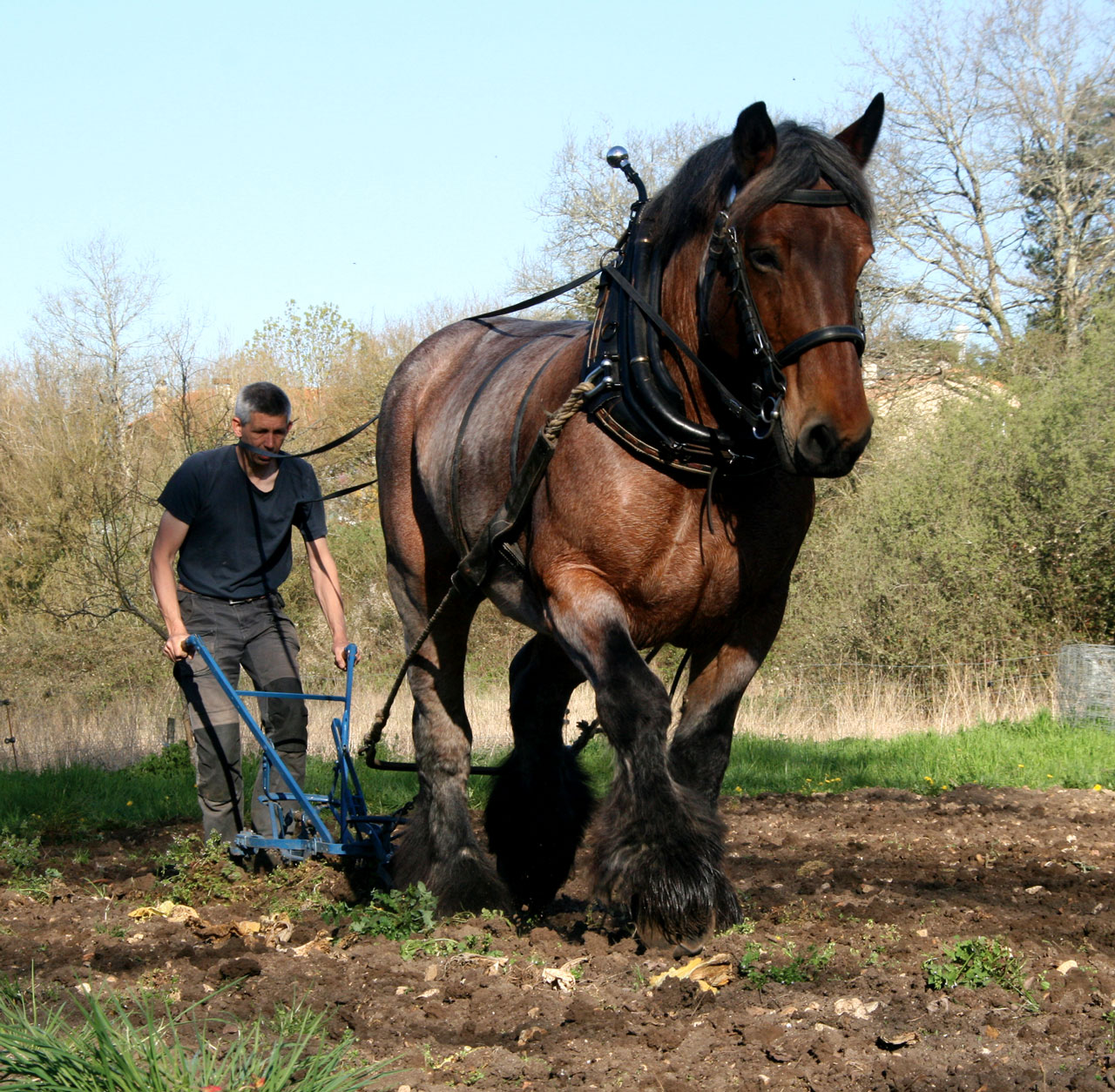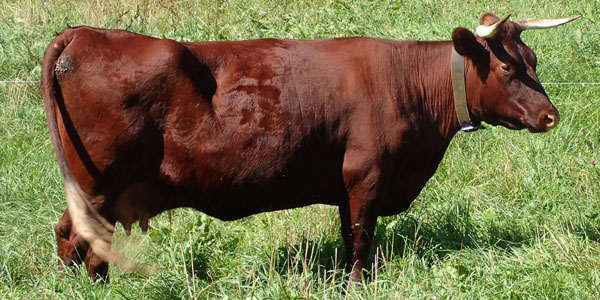
Fjordworks: Market Gardening with a Single Horse

Jeroen Vos of France sent this photo of himself cultivating his one acre market garden with a single horse.
Fjordworks: Market Gardening with a Single Horse
by Stephen Leslie of Hartland, VT
Market gardeners who already have an up and running tractor-powered operation and think they might want to explore transitioning to live horse power are often attracted to the idea of starting with a single horse. The single horse can also be a viable option for creating a mixed power system where the tractor is used for heavy tillage and the horse is used for secondary tillage, cultivation, and other light draft tasks around the farm. And for the complete beginner looking to get started in market gardening and working with horses, a single horse has a lot of appeal. While this can be a viable way to break into horse farming, and some may be on a small enough scale that one horse is all they will ever need, there are some pros and cons to be considered. The very question itself; “Can one successfully run a market garden with a single horse?” — may seem simple enough but on closer examination it is fraught with complexities because there are so many variables to consider.
First, one should consider that “there are horses and then there are horses” — not every horse is cut out to be a single horse — it takes a certain intelligence, work ethic, and self-confidence that not every horse will possess. If the horse is to live alone at your farm, having some other four-legged grazer around for companionship might help ease any possible anxiety of being alone without a herd.
Secondly, a major determining factor to consider in terms of how much draft power you will need is the soil type of your market garden — do you have a heavy clay or a light sandy loam? If I were in the market for choosing a single horse for the job of tilling and cultivating a small commercial produce garden I would probably be looking for a good stout full-size draft type, rather than a smaller draft horse (Fjord or Haflinger), draft x saddle, or draft pony, because I would want that extra muscle power for the big tillage jobs, such as plowing, discing, or hauling the manure spreader. A big horse does not have to work as hard and may walk slower and more steadily as a result. That being said, if an experienced horse who knew this kind of work (and was used to working alone — sometimes a horse who is separated from a lifelong teammate can be problematic) came up for sale, but didn’t have the size, it still might be worth it because you would not have to spend extra time on training. The training factor will be of more or less importance depending on how much previous experience you have working with horses.
In considering the purchase of a single horse it is first necessary to consider which work you know for certain you want to do with the horse. For secondary tillage and cultivation, one horse can do a lot. For primary tillage more horse power might be needed. But if you don’t have enough work to justify a second horse or the land base to support more than one horse, you could consider such options as asking a fellow teamster to bring over a horse just for those times when two are needed, or barter for help from a neighbor who has a tractor. On some operations the hybrid model of using the tractor for primary tillage and the single horse for most everything else might prove the most efficient for the farm.
As to the work itself, a single draft horse could conceivably do all the traction work required to manage a 1-5 acre market garden. A single horse can pull a 3’ section of spring-tooth harrow (nine teeth) or 5’ spike tooth harrow. A big strong draft horse can pull a 5’ disc for smaller jobs — say a 1/4 acre at one time. The Groffdale Machine Company makes a 3’ single horse disc and E-Z trail make the 4’ “Hobi” disc. Pioneer Equipment (and others) make a forecart that switches back and forth easily from team driving with a tongue to shafts for a single horse. The single horse forecart can be used to haul a small single axle spreader, or different types of harrows — and even a small trailer or three-point-hitch plow. A big advantage of managing your market garden with a single horse is that you can make your headlands (drive-around paths) smaller than is required for a team and thus devote more of the land to crops.
With the right sized share most horses can be trained to plow single. There were a lot of manufacturers who made 6”-10” walking plow bottoms made specifically for single animals and with a little luck these vintage plows can still be found. With a big draft you could use a 10” plow designed for team for plowing smaller acreage. I&J Mfg. makes a nice plow with 8”, 10” or 12” shares available that is suitable for a single with a little adjustment of the horizontal clevis on the beam. Another tool the owner of a single draft horse might want to consider is the All-In-One. This is a new multi-purpose tool carrier that is designed for a single horse or smaller teams. It can be used just like a walk behind cultivator to work up the ground in a row path between crops or off-set for over-the-row single horse cultivation, and it has several tool options including a great set-up for furrowing and disc-hilling potatoes.
One last point to consider is that a full-size Belgian or Percheron will eat as much as three thrifty Fjords or Haflingers — so a team of smaller draft horses or ponies might also be something to consider. We currently have four Fjords to manage a 4 acre market garden. At our scale three horses is probably the optimal number for efficiency and flexibility. We can use three-abreast for really big jobs (gives us the power of two full size drafts), a team for most of the work, and have the option of a single for smaller jobs. Also, three horses gives us a little insurance if one horse comes up sick or lame — we always have a team ready to go.
Stephen Leslie, along with his wife Kerry Gawalt and daughter Maeve, manages Cedar Mountain Farm; a 4 acre Fjord Horsepowered CSA and Jersey cow dairy, located at Cobb Hill Co-Housing in Hartland, VT. Stephen is the author of “The New Horse-Powered Farm” and “Horse-Powered Farming for the 21st Century” both from Chelsea Green Publishing.





